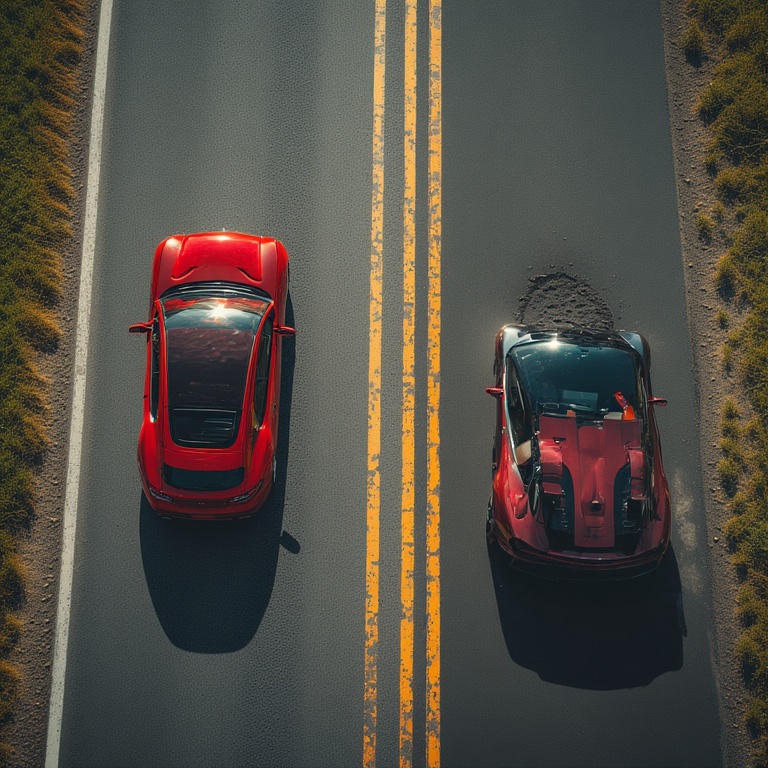Your Chart Is Your Car & Your Consciousness Is The Driver.

Have you ever looked at your Vedic birth chart and felt overwhelmed? Perhaps you saw a difficult placement and thought it was a life sentence, or a powerful combination and expected effortless success. What if I told you that your chart isn’t your destiny, but merely your vehicle? And that the most critical factor in your life’s journey isn’t the vehicle itself, but the consciousness of the one behind the wheel?
This powerful analogy unlocks a more nuanced and empowering understanding of Jyotish. It moves us from a place of fatalism to one of fearless self-mastery. Let’s break down this concept to see how your Car (Chart), your Road (Dasha), and your Driver (Consciousness) interact to create the journey of your life.
Your Car: The Birth Chart (Kundali)
The blueprint you’re born with is your vehicle. It’s the culmination of your past life karma (Sanchita Karma), manifesting as a specific set of tools, challenges, and potentials.
The Ascendant (Lagna): This is the make and model of your car. Are you a sturdy, reliable SUV (Taurus Lagna)? A fast, adaptable sports car (Gemini Lagna)? This defines how you interface with the world.
The Planetary Placements: These are the engine, the brakes, the suspension, and all the internal components. A well-placed, strong Jupiter is a high-performance engine purring with wisdom and optimism. A debilitated Saturn might be a worn braking system, teaching lessons through delay and caution. This is your Prarabdha Karma—the preset package for this life.
You don’t get to choose this car. It’s assigned to you based on what you need to learn and experience. Some cars are built for speed and leadership, others for patience and introspection. Neither is inherently “better”; they are simply different.
The Road: The Dasha (Planetary Period)
Life is not a static experience. You drive your car on ever-changing terrain. This terrain is governed by the planetary periods, or Dashas.
The Smooth Highway (A Benefic Dasha): Imagine cruising down an open, well-paved highway under clear skies. This is the experience of a major period from a well-placed benefic planet like Jupiter or Venus. The journey is fluid, opportunities arise easily, and even a modest car (a challenging chart) can make significant progress with minimal resistance.
The Potholed Mountain Pass (A Challenging Dasha): Now imagine a narrow, rocky road with steep climbs and sudden obstacles. This is the essence of a Saturn or Rahu major period. Progress is slow, the ride is jarring, and it demands your full attention. Even the most powerful car (a so-called “great chart”) will be tested to its limits. The road reveals the true mettle of both the car and the driver.
The Driver: Your Consciousness (Purushartha)
This is where true empowerment lies. You are the driver. Your level of awareness, your choices, and your efforts are what ultimately determine the quality of the journey.
The Unconscious Driver: This driver is asleep at the wheel. They blame the car for being too slow or the road for being too rough. They floor the accelerator on a icy curve (anger during a Saturn period) and wonder why they crashed. They are a victim of their chart, completely identified with their vehicle and their terrain.
The Conscious Driver: This driver has read the manual. They understand their car’s strengths and weaknesses. They know the brakes are a little soft (Saturn is weak), so they drive more defensively. They know they have a powerful engine (a strong Sun), but they wait for a clear straightaway to use it. When they see signs for a rocky road ahead (a challenging Dasha), they don’t panic. They slow down, get a tune-up (perform remedies, engage in sadhana), and navigate the challenges with patience and skill.
The Journey Home
The purpose of Vedic astrology is not to admire your car or curse the road. It is to provide you with the owner’s manual so you can become the most conscious driver possible. It is a tool for self-awareness, allowing you to use your free will to navigate your destiny with grace and wisdom.
So, ask yourself: Are you merely a passenger in your vehicle, complaining about the ride? Or are you in the driver’s seat, hands on the wheel, eyes on the horizon, fully engaged in the art of navigating your soul’s unique journey?
The road is waiting. How will you drive it?
